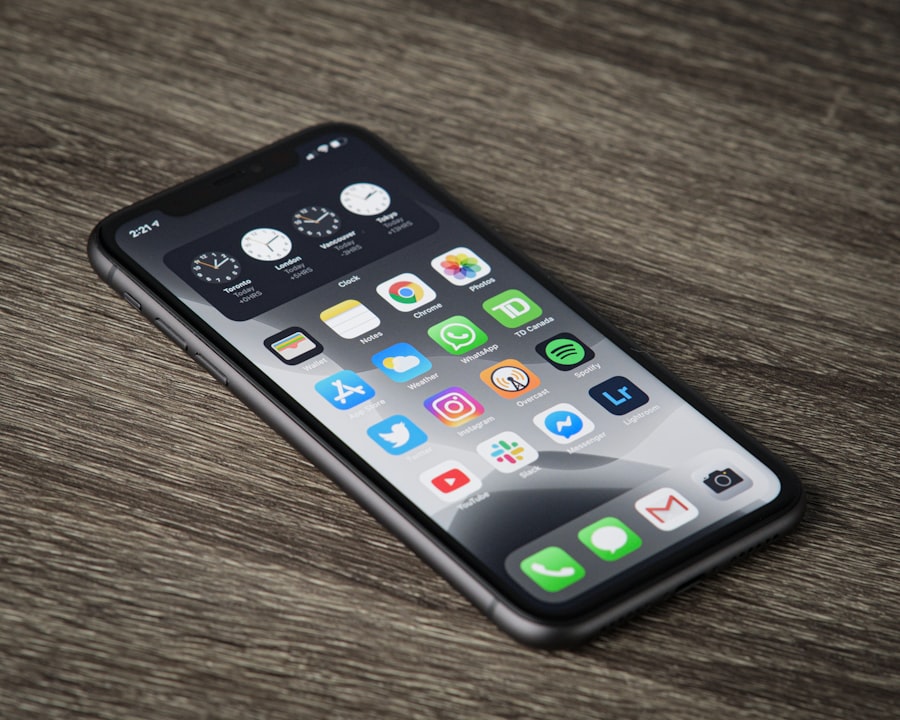
Digital wallets have revolutionized the way consumers manage their finances and make purchases. By allowing users to store payment information securely on their smartphones or other devices, digital wallets have made transactions faster and more convenient. This shift has led to significant changes in spending habits, as consumers are now able to make purchases with just a few taps on their screens.
The ease of access to funds can lead to increased spending, as the friction traditionally associated with cash or card transactions is virtually eliminated. For instance, a study conducted by the Federal Reserve found that consumers using digital wallets tend to spend more per transaction compared to those using cash or physical cards, primarily due to the seamless nature of the payment process. Moreover, the integration of loyalty programs and promotional offers within digital wallets further incentivizes spending.
Many digital wallet platforms allow users to link their loyalty cards, enabling them to earn rewards effortlessly while making purchases. This gamification of spending can encourage consumers to buy more frequently or opt for higher-priced items, as they perceive they are gaining additional value through rewards. The psychological impact of seeing points accumulate can create a sense of urgency and excitement around spending, leading to a shift in how individuals approach their financial decisions.
The Role of Convenience and Ease of Use in Digital Wallets
The convenience offered by digital wallets cannot be overstated. With the ability to store multiple payment methods, including credit cards, debit cards, and even cryptocurrencies, users can make transactions without the need to carry physical cards or cash. This ease of use is particularly appealing in today’s fast-paced world, where time is often at a premium.
For example, during busy shopping seasons or events, consumers can complete transactions quickly, reducing wait times and enhancing the overall shopping experience. This convenience often translates into increased frequency of purchases, as consumers are more likely to buy on impulse when they know they can do so effortlessly. Additionally, the user-friendly interfaces of many digital wallet applications contribute significantly to their popularity.
Features such as one-click payments, biometric authentication, and transaction history tracking make it easy for users to manage their finances on the go. The ability to view spending patterns and categorize expenses within the app can also empower users to make informed financial decisions. However, this ease of use can also lead to a lack of awareness regarding spending limits and budgeting, as consumers may not fully grasp the implications of their spending habits when transactions are so easily executed.
The Influence of Social and Peer Pressure on Digital Wallet Spending

Social dynamics play a crucial role in shaping consumer behavior, and digital wallets are no exception. The visibility of spending through social media platforms and peer interactions can create a culture of comparison that influences how individuals use their digital wallets. For instance, when friends share their latest purchases or experiences online, it can trigger a desire to keep up with peers, leading to increased spending.
This phenomenon is often referred to as “social proof,” where individuals feel compelled to conform to the behaviors of those around them. As digital wallets facilitate quick and easy transactions, users may find themselves making purchases they wouldn’t have considered otherwise. Moreover, the integration of social features within some digital wallet applications can amplify this effect.
For example, platforms that allow users to send money or split bills with friends can create a sense of camaraderie but may also lead to overspending in social situations. The pressure to participate in group activities or treat friends can result in impulsive financial decisions that deviate from an individual’s budgetary constraints. This interplay between social influence and digital wallet usage highlights the need for consumers to remain mindful of their financial goals amidst external pressures.
The Psychological Effects of “Invisible” Spending with Digital Wallets
| Psychological Effects of “Invisible” Spending with Digital Wallets |
|---|
| Increased impulsive buying |
| Reduced awareness of spending |
| Less attachment to physical money |
| Difficulty in tracking expenses |
| Increased risk of overspending |
One of the most significant psychological effects of using digital wallets is the phenomenon of “invisible” spending. Unlike cash transactions, which provide a tangible sense of loss when money is exchanged, digital payments often lack this physical feedback. As a result, consumers may not fully register the impact of their spending habits.
Research has shown that individuals who use digital wallets tend to underestimate their expenditures because the act of spending feels less real when it occurs through a screen. This disconnect can lead to a lack of accountability and awareness regarding one’s financial situation. Furthermore, the design of many digital wallet applications can exacerbate this issue by emphasizing convenience over conscious spending.
Notifications about successful transactions or rewards earned may create a dopamine response that reinforces the behavior of spending without adequate reflection on necessity or value. As users become accustomed to this “invisible” form of spending, they may find it increasingly challenging to maintain control over their finances, leading to potential debt accumulation or financial stress.
How Digital Wallets Affect Impulse Purchases and Instant Gratification
The design and functionality of digital wallets inherently promote impulse purchases and instant gratification. With features like one-click payments and instant access to funds, consumers are more likely to make spontaneous buying decisions without thoroughly considering their choices. For example, during online shopping events such as Black Friday or Cyber Monday, the ease with which consumers can complete transactions through digital wallets often leads to higher rates of impulse buying.
The thrill of snagging a deal can overshadow rational decision-making processes, resulting in purchases that may not align with long-term financial goals. Additionally, the immediacy associated with digital wallets caters to a growing consumer desire for instant gratification. In an age where convenience is paramount, waiting for traditional payment methods can feel cumbersome and outdated.
This cultural shift towards immediacy has been further fueled by marketing strategies that emphasize limited-time offers and flash sales, which play on consumers’ fear of missing out (FOMO). As a result, individuals may find themselves making purchases driven by emotional responses rather than thoughtful consideration, leading to potential regret once the initial excitement fades.
The Relationship Between Digital Wallets and Emotional Spending

Emotional spending is another area significantly influenced by the use of digital wallets. The convenience and accessibility provided by these platforms can make it easier for individuals to turn to shopping as a coping mechanism during times of stress or emotional turmoil. For instance, someone experiencing anxiety may find solace in making small purchases through their digital wallet as a way to elevate their mood temporarily.
This behavior can create a cycle where individuals rely on shopping for emotional relief, leading to increased spending that may not align with their financial well-being. Moreover, the instant gratification associated with digital wallet transactions can further entrench emotional spending habits. When individuals receive immediate satisfaction from their purchases—whether it’s a new outfit or a meal delivery—they may be less likely to consider the long-term consequences of their actions.
This pattern can lead to financial instability if not addressed proactively. Understanding the triggers behind emotional spending is crucial for individuals seeking to break free from this cycle and develop healthier coping mechanisms that do not involve impulsive financial decisions.
The Psychological Benefits and Drawbacks of Budgeting with Digital Wallets
Digital wallets offer various tools that can aid in budgeting efforts, providing users with insights into their spending patterns and helping them set financial goals. Many applications come equipped with features that allow users to categorize expenses automatically, track monthly budgets, and receive alerts when they approach their spending limits. This level of visibility can empower individuals to take control of their finances and make informed decisions about where their money goes.
For example, a user might discover that they are overspending on dining out and decide to allocate more funds toward savings instead. However, while these features can be beneficial, they also come with potential drawbacks. The reliance on technology for budgeting may lead some users to become complacent about their financial management practices.
If individuals become too dependent on automated tracking without actively engaging with their finances, they may miss opportunities for deeper reflection on their spending habits. Additionally, if users do not regularly review their budgets or adjust them based on changing circumstances, they may find themselves in situations where they overspend despite having budgeting tools at their disposal.
Strategies for Mindful and Intentional Spending with Digital Wallets
To counteract the potential pitfalls associated with digital wallet usage, individuals can adopt strategies for mindful and intentional spending. One effective approach is setting clear financial goals that guide purchasing decisions. By establishing specific objectives—such as saving for a vacation or paying off debt—users can create a framework for evaluating whether a purchase aligns with their priorities.
This practice encourages individuals to pause before making impulsive decisions and consider how each transaction contributes to their overall financial well-being. Another strategy involves utilizing budgeting features within digital wallet applications more effectively. Users should regularly review their spending categories and adjust budgets based on actual expenditures rather than relying solely on automated tracking.
Setting up alerts for significant transactions or approaching budget limits can serve as helpful reminders to stay within financial boundaries. Additionally, incorporating practices such as waiting 24 hours before making non-essential purchases can help mitigate impulse buying tendencies fostered by the convenience of digital wallets. By implementing these strategies, individuals can harness the benefits of digital wallets while maintaining control over their finances and fostering healthier spending habits that align with their long-term goals.
FAQs
What is a digital wallet?
A digital wallet is a software-based system that securely stores users’ payment information and passwords for numerous payment methods and websites. It allows users to make electronic commerce transactions quickly and securely.
How do digital wallets impact spending psychology?
Digital wallets can impact spending psychology in several ways. They provide convenience and ease of use, which can lead to increased spending. Additionally, the detachment from physical money can make it easier for users to overspend without feeling the same level of loss.
What are the benefits of using a digital wallet?
Some benefits of using a digital wallet include convenience, security, and the ability to easily track and manage spending. Digital wallets also often offer rewards and cashback incentives for using them for purchases.
Are there any downsides to using a digital wallet?
Some potential downsides to using a digital wallet include the risk of security breaches and fraud, as well as the potential for overspending due to the ease of making purchases. Additionally, not all merchants accept digital wallet payments, which can limit their usability in some situations.
How can users manage their spending when using a digital wallet?
Users can manage their spending when using a digital wallet by setting spending limits, regularly reviewing their transaction history, and being mindful of their purchasing habits. Additionally, some digital wallets offer budgeting tools and spending insights to help users track and manage their finances.




